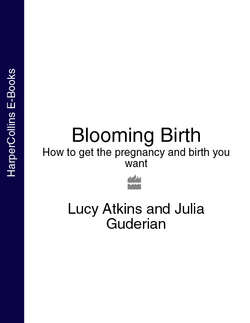Читать книгу Blooming Birth: How to get the pregnancy and birth you want - Lucy Atkins - Страница 68
High risk tip:
Оглавление‘High risk’ does not necessarily mean you lose all control over this birth. Midwife Jenny Smith believes it’s important for medical teams to work with the woman, when it comes to high risk births: ‘One mother I looked after was 45 years old, and pregnant from IVF. She had “white coat hypertension” – in other words, a fear of doctors – and her blood pressure would shoot up when monitored. She also had fibroids, but wanted a normal birth. Following a full check that she did not have pre-eclampsia (a high blood pressure condition that can be fatal for mother or baby), she went on to have a labour in a dimly lit room on the floor with beanbags and mats and delivered on the birthstool. We carefully prepared, with all the equipment ready, in case she should have a haemorrhage. I believe managing high risk is all about being realistic about the risk, thinking individually about every woman, listening to her and discussing her individual potential risks very fully with her before making an appropriate plan for labour that all carers are aware of.’
LABOUR AT A GLANCE: THE TEXTBOOK VERSION
First stage This stage begins when your cervix starts to open and ends when it is 10 cm or fully dilated. Often begins with a ‘bloody show’ or ‘loss of mucous plug’.
Early phase Also known as ‘latent labour’, ‘pre-labour’ and sometimes, rather tactlessly, ‘false’ labour. It can take one to 12 hours for the cervix to dilate to 3 cm and the beginnings of effacement. Mild contractions begin at 15–20 minutes apart and last 60–90 seconds. Contractions then become more regular, until they are less than five minutes apart.
Active phase The cervix dilates from about 4–10 cm. Contractions become stronger and progress to about three minutes apart, lasting about 45 seconds. Takes one to six hours.
Transition phase The cervix reaches full dilation (or about 9 cm) before there is an urge to push. Contractions happen two to three minutes apart and last about 60 seconds. Takes five minutes to two hours.
Second stage With a fully dilated cervix (10 cm), you start to push the baby out. This phase may last five minutes to an hour (or longer). Contractions may slow to two to five minutes apart and last 60–90 seconds.
Third stage This last stage of childbirth begins once the baby is born and ends with the delivery of the placenta and membranes. Usually happens within 15–30 minutes of the baby’s delivery. It is a short stage lasting 15 minutes or less. Contractions are closer together and may be less painful. The placenta separates from the uterine wall and is delivered.
